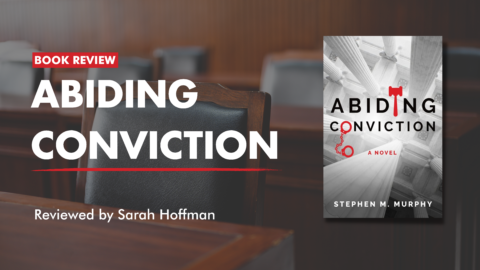There is an analogy that has been passed down through the years involving a woodcutter going about the task of cutting wood. In the story, the woodcutter is asked by an observer why they don’t stop to sharpen their saw. It is obvious to the observer that the woodcutter is certainly working hard but is also showing all the signs of exhaustion and fatigue, and not making much progress despite diligent work.
Perhaps you can relate to this analogy in your own work environment. The tasks you must complete in order to achieve the success you seek are taking a toll, but you can’t just stop and take time for yourself. “There isn’t enough time!” you exclaim, and back to the grind you go without regard for the damage this action, and lack of other actions, is taking on you, your colleagues, your clients, the firm as a whole, and your families.

Self-Care Extends Beyond Self
When we incorporate principles of self-care and wellness into our lives it has a positive effect that extends well beyond ourselves; it benefits everyone around us. This is true of the energy shared with others, and the example that is set. In an office situation, when leaders exhibit the qualities and practices of self-care, it grants permission for others to take the steps necessary for their own self-care. Imagine an office full of people who can sharpen their saws and be their best selves through the inevitable and unavoidable stresses we all endure.
Whether an organization has a formal program around self-care, or exhibits a culture of such behavior, it has a positive impact on recruiting and retention efforts as well. The benefit of practicing self-care in the workplace is well-founded. Numerous studies show employees who engage in such activities are more satisfied with their jobs, have lower rates of absenteeism, report lower levels of stress, and are more engaged at work.
Furthering that point, the current workforce—especially those recently entering it—expect to be able to incorporate healthy behaviors into their integrated professional and personal lives.
Identifying Patterns
The human existence is one of rhythms and cycles. Ideally, we cycle through “energy spend” (catabolic) and “energy restore” (anabolic) patterns in ways that allow us to maximize all aspects of ourselves. Our modern lives do not make this easy.
By default, we go through a barrage of catabolic events every day. Waking up to an alarm clock in the morning; consuming caffeine throughout the day; processing and responding to stimuli like email, meetings, traffic, relationships; hurriedly eating less-than-ideal food (if at all), being bombarded with electromagnetic stress all day, then bringing it back down with some alcohol at night. Add it up and you have yourself one heck of an energy expenditure footprint! And what has been done throughout the day to counter those catabolic events?
Neither our bodies nor our minds operate optimally when forced to withstand a continuous cycle of catabolic (stress-inducing) activities without any anabolic (rest-inducing) activities. It is imperative that we identify the patterns in our lives and interject moments of rest to ensure we have a flow of energy that supports us.
When we can identify the patterns that limit us, we can then devise a plan to intervene. Awareness is the first key to success. So, what should we be paying attention to? Our bodies give us all the feedback we need to know when it’s time to interrupt a pattern.
The following is a guide to the various ways your body may be telling you that it is time to identify some patterns to be disrupted. We call these our Bodily Navigation Stars.
- Mood
- Energy Levels
- Mental Acuity
- Respiration Rate
- Heart Rate
- Muscle Tension
- Sleep Quality
Plan Your Work, Work Your Plan
It may be obvious to you already which patterns you need to begin disrupting. Getting started and being consistent can be quite a different story. For that purpose, I would like to share six wellness tenets as a framework from which you can devise and execute your plan.
The following are the six tenets along with a summary of ways to use them to disrupt negative patterns.
Thoughts: Our brains are either creators or saboteurs to all that we do in our lives. Becoming clear on our overall purpose and setting intentions around that purpose lays a foundation that guides our decision-making. The practice of mindfulness is a key element to this tenet. When we are mindful of our bodily navigation stars—and to the thoughts, words, and actions we take throughout the day—we are better positioned to identify negative patterns and to intervene sooner than later.
Breathing: It is something we do from the first day to the last day of our lives. Perhaps its omnipresence in our lives makes us take it for granted. But if we do, we not only create a negative internal environment but we also miss out on this tremendous tool. The simple act of bringing your attention to your breathing and establishing proper breathing patterns will serve you in a multitude of ways. In short, breathe with your diaphragm, allowing your belly to rise on your inhale and sink on your exhale.
Hydration: Our bodies are made up of approximately 60 percent water, with our brain, heart, and lungs made up of 70-80 percent water. Water is the primary building block of cells. It helps the body to digest food, process and eliminate waste, and a whole lot more. With all that water does for us it should not be surprising that being dehydrated by just 2 percent has a negative impact on cognitive function. The general guidance on water consumption is to have it be the liquid you drink in the highest volume. Beyond all the benefits your body and mind receive from drinking water, it is also a great way to interrupt negative patterns. A break to walk to get a drink of water and to mindfully drink that water is a multi-beneficial action.
Nutrition: It goes without saying that food is a critical part of our well-being. While getting the best, most nutritious food at every meal is not always as practical (or desired), there are many steps that can be taken to have food do more than just fill our bellies. An emphasis on eating real food and limiting edible food-like substances goes a long way to giving us the energy we need to sustain us. Regardless, take the time to express gratitude for the food you are about to eat and for those that helped get it to you. Eat slowly and mindfully. And perhaps most importantly, pay attention to your Bodily Navigation Stars after you eat. It is the feedback you need to make improvements and is a mindful practice. Even more multi-beneficial actions!
Movement: It is important to note that the tenet is not called exercise. While exercise can have tremendous benefits, it can also be daunting for a variety of reasons. But there is always time in the day to break the negative pattern of being stagnant. Our bodies are designed to move and when they do not get proper movement a litany of problems can arise. Movement can be as basic as a walk, or some light stretching intermixed to break up long periods of not moving.
Rest: If there is one thing that I wish could be bestowed upon everyone is the ability to get quality restful sleep. One way to support better sleep is to have rest throughout the day. Breaking the patterns of constant catabolic activities within the day better prepares us to sleep at night. Our ability to get to sleep is a key indicator of how we treated ourselves during the day. We get stronger at rest. Making time for rest breaks in the day and incorporating activities in support of the previous tenets will set you up for better sleep. Making quality sleep a priority can support your initiative to make the behavior changes during the day that will impact your sleep.
Keys for Success
This can all seem so daunting and impossible to incorporate. Some pointers to fend off discouragement:
- Become clear on why you want to make a change.
- Recognize that small changes can make a big difference. It does not take as much time as you think.
- Have a mindset of transformation.
- Pick one thing, the easiest thing, the thing you enjoy doing as a starting point. Don’t try to conquer everything with one fell swoop.
- Be kind to yourself. Starting with how you talk to yourself, use words of kindness and compassion.
Take care of yourself!
About the Author
Michael Susi is the director of wellness at LinkedIn, where he started the program in 2011. Previously Michael owned his own company providing online exercise and nutrition plans to individuals. He also worked in a variety of sales and marketing roles, was a personal trainer and coached college football.




